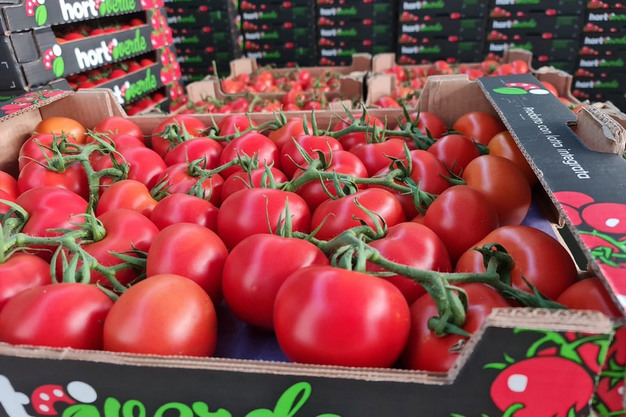The end of the year approaches for vegetable producers in Almeria with a drop in temperatures after an "extremely warm" November in the province, according to the state meteorological service, which has caused eggplant prices at source to exceed 2 Euro per kilo.
"Eggplant has been the most affected by temperature changes, even more than other vegetables, like zucchini or cucumber. As soon as the cold weather arrives, the plant stops growing and the production slows down. On cloudy days, there are even flowers falling, so the production is drastically reduced until temperatures recover. That's the reason why eggplant prices reach certain peaks throughout the year," says Dimitri Calabrese, of Hortoverde.

Prices at source can then become really interesting, but when they reach certain levels, they make the marketing more difficult. "For example, in our case, the packaging and shipping costs of our exports to Italy amount to around 70 cents. To this you must add to the price of the product, and supermarkets must also add some to ensure a profit margin. But when consumer prices reach 3 or 4 Euro per kilo, consumption stops."
"As far as tomatoes are concerned, ToBRFV is not as big a concern as in previous seasons and the campaign is going well in terms of volumes. What we do see is an increasing presence of Moroccan tomatoes on the shelves. In Italy, Moroccan tomatoes had so far not been accepted by all supermarket chains, but we are now seeing more and more discounter chains starting to work with them. However, in general, chains outside the discount segment still prefer domestic and Spanish produce."

As for peppers, the heat at the beginning of the season took a toll on the first crops, causing quality issues in some cases. "But what has really affected growers this year has been a problem they already had last year, which is Thrips parvispinus," says Dimitri.
"As some growers have told me, this is becoming a serious problem. In fact, if no effective solution in integrated control is found, many growers will think twice before growing peppers next season."

For the time being, the lower temperatures are now expected to cause a drop in thrips populations in Almeria's greenhouses, although as pointed out by the Andalusian phytosanitary alerts network (RAIF), the incidence of the pest, with higher levels than in other seasons, has made it necessary for some plots to be uprooted because of the damage caused to the crops.
"Thrips cause dark, rough spots to appear on the surface of the peppers. The damage is merely aesthetic, but it prevents the product from being sold fresh. At Hortoverde, we deliver first class products to supermarkets, but we also have a specific line of second class products for certain clients, and they don't accept peppers affected by Thrips parvispinus either, so, in any case, this production needs to be diverted to the industry, where prices are much lower than in the fresh market," says Dimitri.

"Moreover, in El Ejido we had a hailstorm in late October which had an impact on various crops, so, surely, those affected by the hail and those growers who have had or are having a high incidence of Parvispinus, are already considering uprooting their peppers so that, when the time comes, they can plant watermelon."
For more information:
Hortoverde Nature S.L.
Ctra. La Mojonera-El Solanillo, 4855
04738 Vícar, Almería, Spain
Tel.: +34 950 500 999
[email protected]
https://www.hortoverde.com
